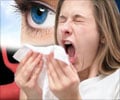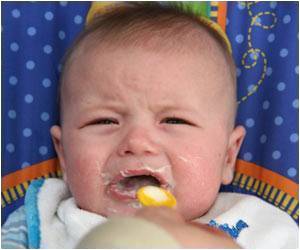The onset of winter cold and flu season combined with colder, short days unfortunately all contribute to increased asthma symptoms for many children.
People remain inside this time of year plus indoor air quality becomes poor, while colds move through families, schools and communities. As homes are tightly sealed with closed windows, air is trapped with less ventilation causing irritants that trigger asthma to be more concentrated.Tobacco smoke, molds, smoke from festive holiday fireplaces and wood stoves used for heat all contribute to poor air quality, negatively impacting asthma sufferers. Children are increasingly diagnosed with asthma in the United States, and they can be especially affected by air quality in their environment.
Asthma sufferers often have spikes in asthma symptoms following respiratory symptoms associated with colds and flu. This is the primary reason for increased asthma episodes in winter. The higher incidence of respiratory illness during this season means this time of year can be doubly hard for those with asthma because colds, flu and other infections like pneumonia can trigger symptoms. Cold or dry winter air can also be a factor. An allergy to dust, pets, animals, pollens or molds also leads to asthma in some individuals.
“In winter we definitely see increases in emergency visits, hospital admissions and children with more severe asthma,” said James W. Stout, MD, MPH, of Seattle Children’s Hospital Research Institute. “The number one reason for hospital asthma admissions is colds, even among those with allergy-mediated asthma. But there are things families can do to help children with asthma get through this time of year. Diligent hand-washing to help prevent colds and keeping air in the home as clean as possible goes a long way. It’s also important to lessen the particular allergens that are triggers for each child.” Stout led research targeting the Seattle-Tacoma metropolitan area as part of a 2004 study funded by the National Institutes of Health called The Inner City Asthma Study, published in the New England Journal of Medicine. Study results showed that changes in the home environment can produce reduction in symptoms comparable to that achieved with asthma medications. New asthma guidelines released in August of 2007 suggest that reducing dust mites has the strongest impact of all environmental strategies for reducing asthma triggers in homes.
One in every eight children in the United States has asthma. Children-of-color, those who live in the inner city, and those from lower-income families in both urban and rural areas are at greater risk for developing asthma. Increased asthma incidence in these populations may stem in part from higher exposure to multiple indoor allergens and tobacco smoke.
Asthma is a chronic condition of the passageways that carry air to the lungs. These airways become narrow and their linings become swollen, irritated and inflamed. Bronchial constriction, or tightening of the smooth muscles that surround these airways, is the feature of asthma that typically leads to “asthma attacks,” which can lead to hospitalization in some children. Symptoms include coughing, wheezing and difficulty breathing. Talk with your child’s doctor if you are concerned he or she may have asthma, because there are other less common illnesses that can also cause similar symptoms.
Advertisement
1. Keep children away from second-hand tobacco smoke. If anyone in your household smokes, make sure they smoke outside or away from children. Do not allow anyone to smoke in the car when children are present.
Advertisement
3. Use only clean-burning candles. Plain, unscented natural beeswax candles have a gentle, sweet scent without added perfumes and dyes.
4. Avoid bedding or pillows stuffed with down, feathers or foam rubber. Cover pillows and mattress with dust-proof, “hypoallergenic” allergen-impermeable fabric cases. Avoid lots of stuffed animals and plush toys.
5. Wash bedding once a week in hot water, and dry in a hot dryer for at least 30 minutes to eliminate dust mites.
6. Dust and vacuum when your child is out of the room. Use a damp cloth for dusting, and a vacuum that collects and traps dust mites such as one with a double bag or HEPA (high energy efficiency particulate air) filter.
7. Keep pets off of furniture and out of your child’s room.
8. Use HEPA filters in key locations in your home, especially in your child’s bedroom.
9. Rid your home of cockroaches and other pests that may carry allergens.
10. Keep your child’s medicines including asthma inhalers on hand and up-to-date. Ask your health-care provider to check your child’s lung function and sensitivities to airborne allergens. Also ask them to help you make a written asthma management plan for your child.
Source-Newswise
SRM/M











